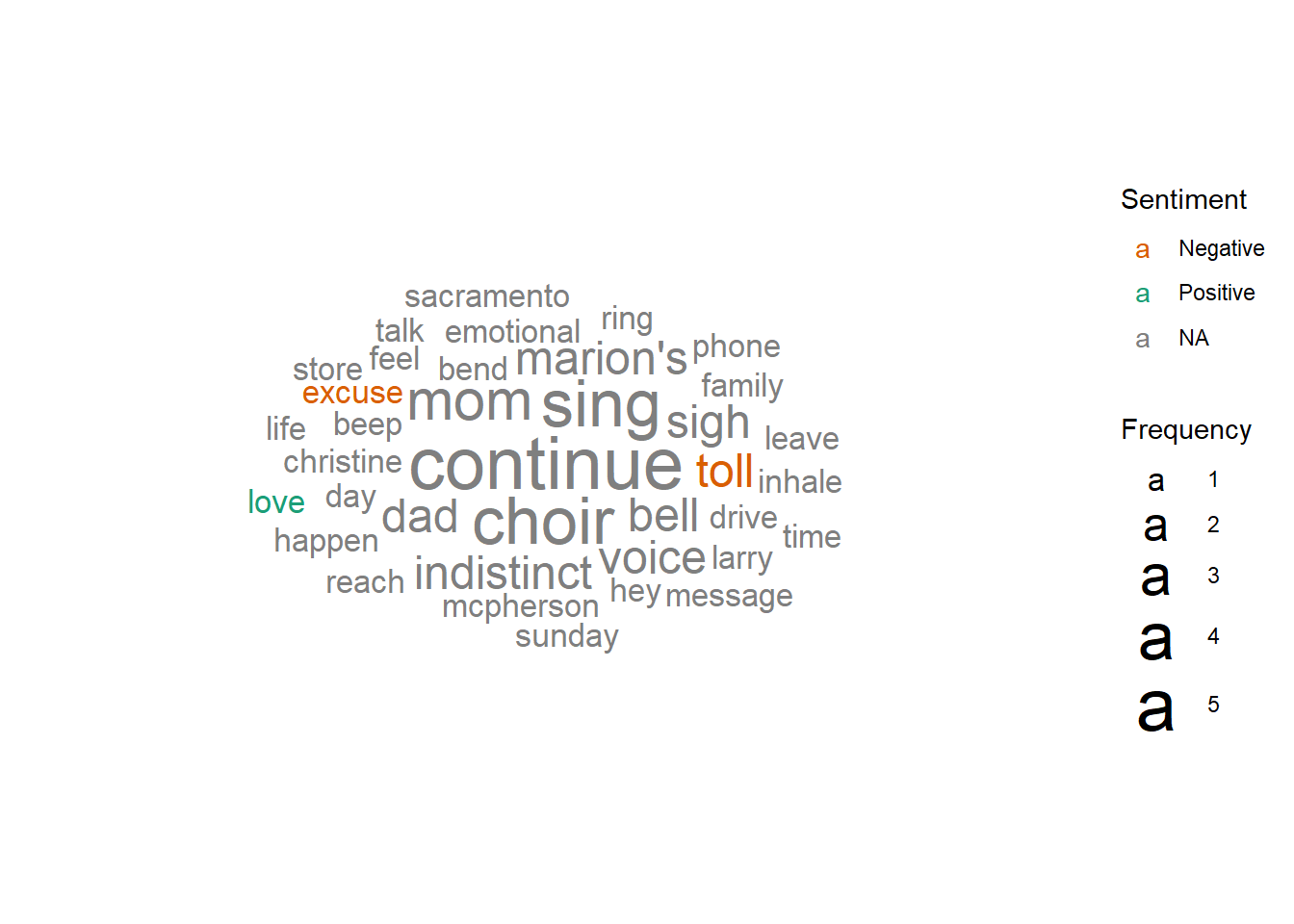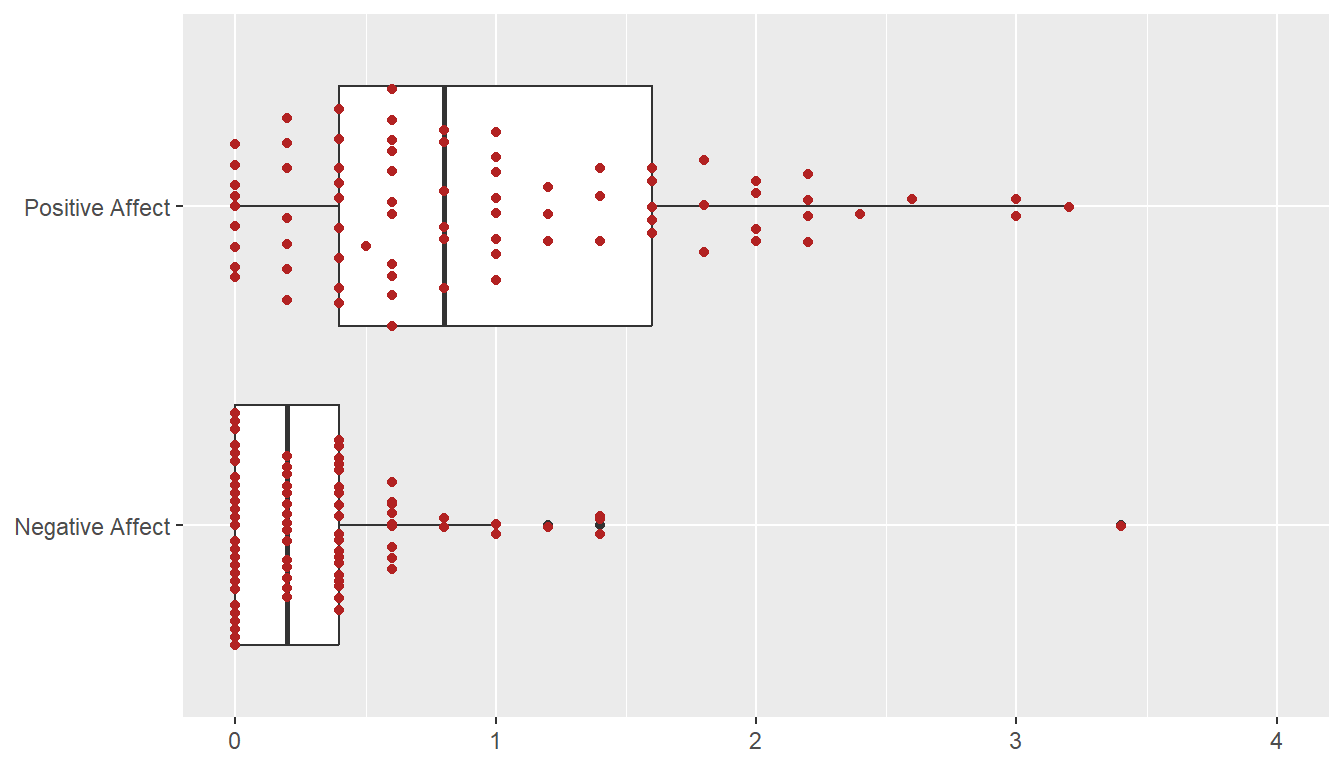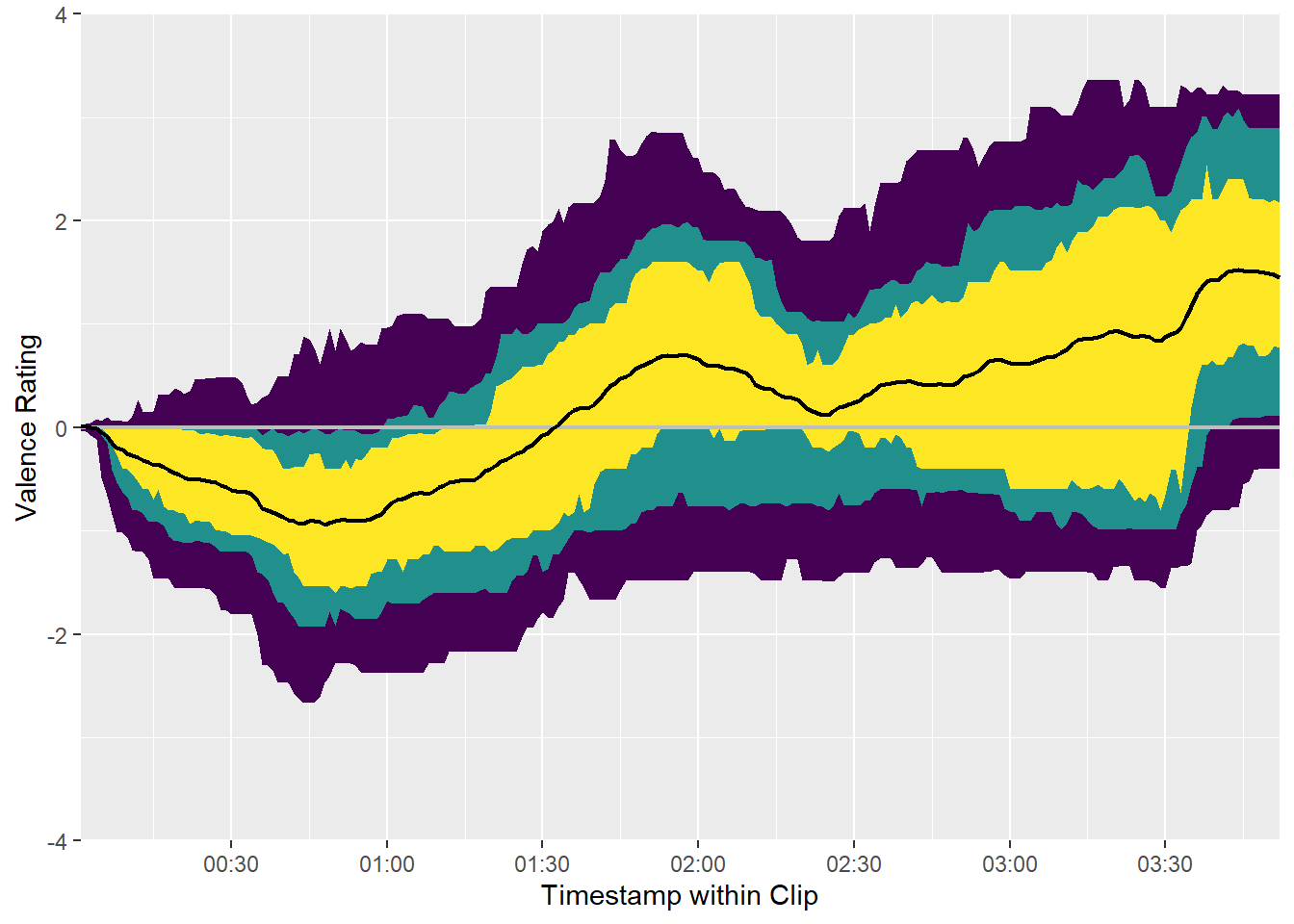| Abbrev | Film | Clip Start | Clip Stop | Duration |
|---|---|---|---|---|
| LadyBird | Lady Bird (2017) | 01:24:40.000 | 01:28:32.000 | 232 |
Lady Bird
Film Information
All information in this section came from Wikipedia.
Clip Information
Christine McPherson wakes up in the hospital after drinking too much during her first weekend at college. She calls her parent’s home and leaves a voicemail.
| Characteristic | Value |
|---|---|
| Format | MPEG-4 |
| File Size | 80.5 MiB |
| Duration | 232.024 |
| Frame Rate | 23.976 |
| Video Width | 1920 |
| Video Height | 1024 |
| Video BitRate | 2.8 MB/s |
| Audio Channels | 2 |
| Audio SamplingRate | 48000 |
| Audio BitRate | 128.4 kB/s |

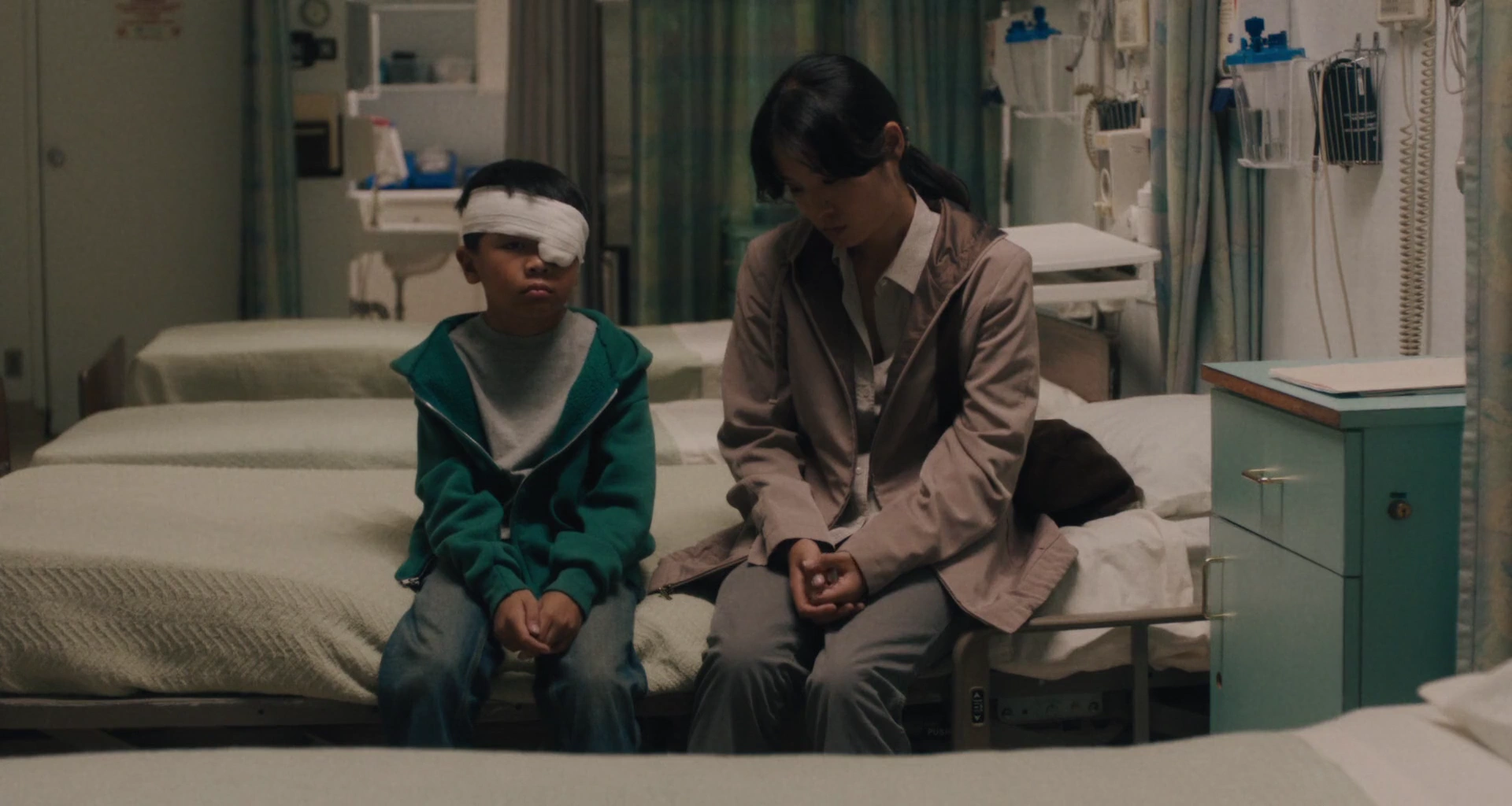



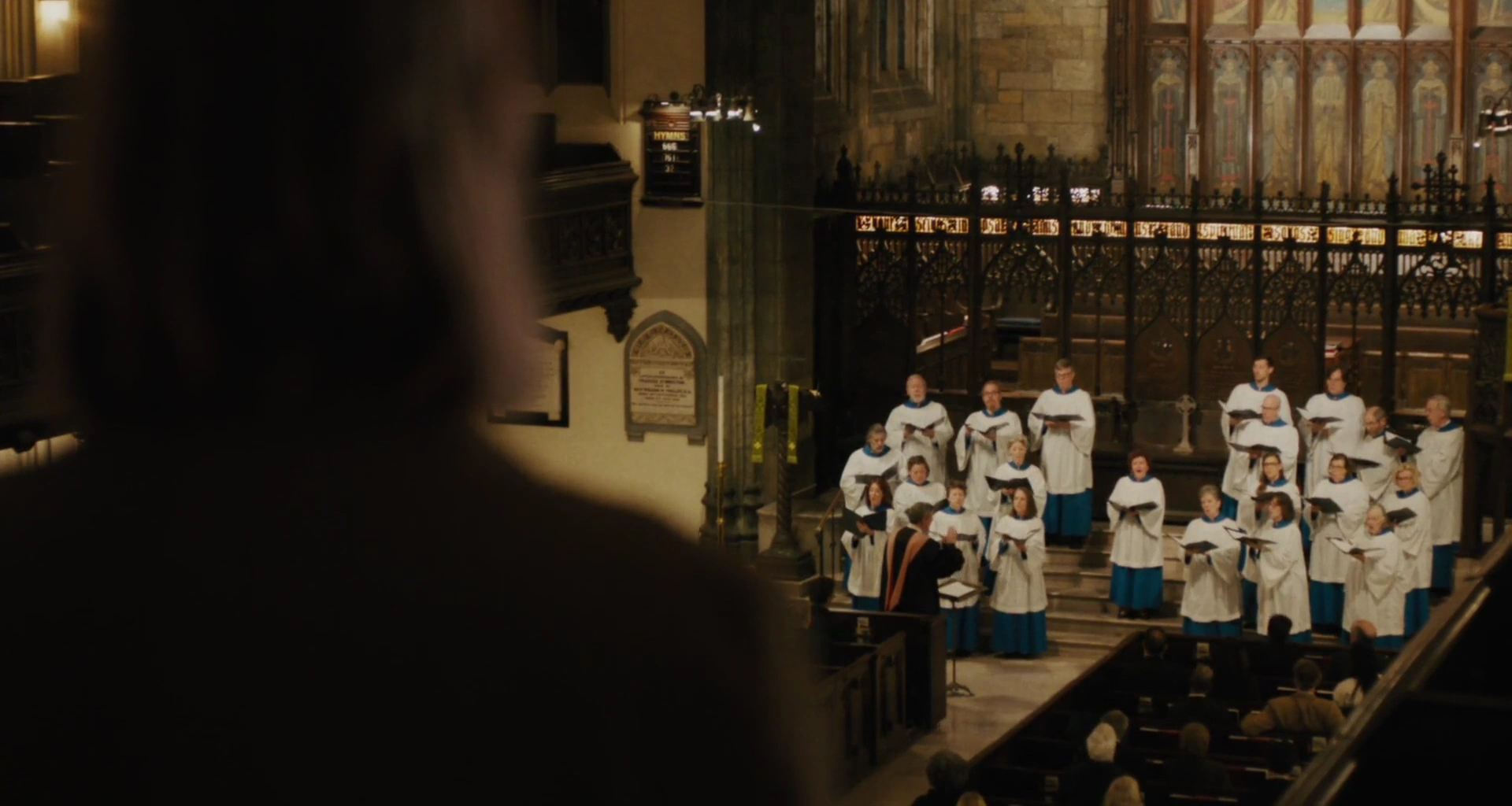
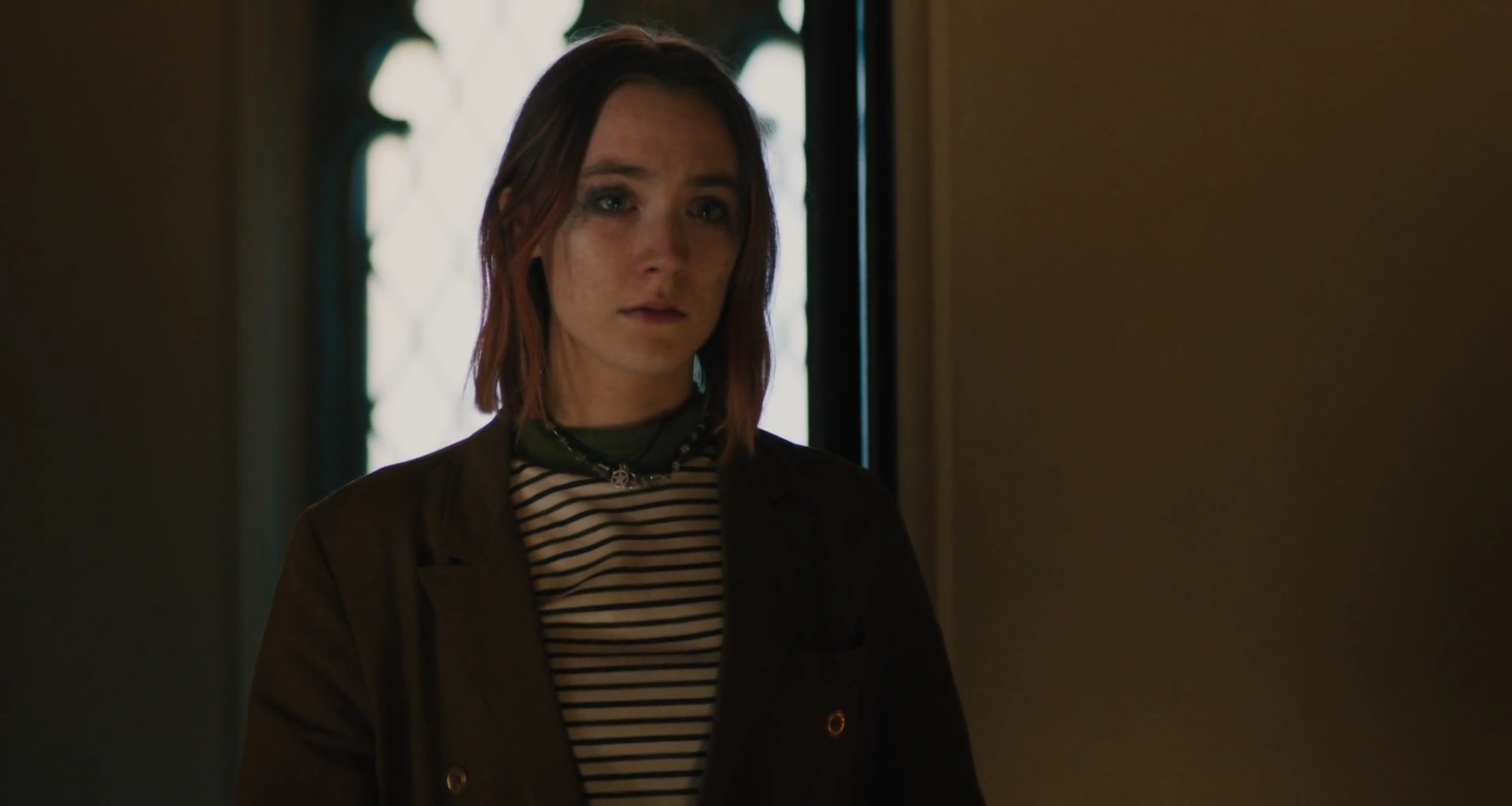





Subtitles
The following wordcloud shows the words used in this clip, scaled by number of occurrences and colored by sentiment (orange = negative, green = positive, grey = neutral or unsure). Note that the words have been stemmed and lemmatized and stopwords have been removed.
The table below shows all subtitles in this clip with the start and stop time of each subtitle’s appearance in seconds.
| Start | End | Subtitle |
|---|---|---|
| 18.822 | 26.822 | [sighs] |
| 62.325 | 64.242 | Excuse me. What day is it? |
| 64.244 | 66.159 | Sunday. |
| 66.161 | 67.244 | Thank you. |
| 67.246 | 68.248 | [bell tolling] |
| 82.094 | 84.263 | - [bell tolling continues] - [choir singing] |
| 88.935 | 91.228 | [choir singing continues] |
| 103.240 | 105.368 | [choir singing continues] |
| 120.008 | 122.135 | [choir singing continues] |
| 126.138 | 127.932 | [phone ringing] |
| 138.151 | 140.609 | [Larry] Hi. You've reached the McPherson family. |
| 140.611 | 142.444 | Please leave a message. Thank you. |
| 142.446 | 143.947 | [beeps] |
| 143.949 | 145.075 | Hi, Mom and Dad. |
| 146.200 | 148.911 | It's me. Christine. |
| 150.579 | 153.165 | It's the name you gave me. It's a good one. |
| 156.002 | 157.754 | Dad, this is more for Mom. |
| 160.923 | 162.551 | Hey, Mom. |
| 165.178 | 171.724 | Did you feel emotional the first time that you drove in Sacramento? |
| 171.726 | 175.519 | I did, and I wanted to tell you, |
| 175.521 | 178.440 | but we weren't really talking when it happened. |
| 180.360 | 182.860 | All those bends I've known my whole life, |
| 182.862 | 188.241 | and stores and the whole thing. |
| 188.243 | 194.581 | [Marion's indistinct voice] |
| 194.583 | 196.960 | [Marion's indistinct voice continues] |
| 207.387 | 208.972 | But I wanted to tell you... |
| 211.432 | 213.100 | I love you. [sighs] |
| 214.436 | 217.105 | Thank you. I'm... |
| 220.066 | 221.067 | Thank you. |
| 226.408 | 231.408 | ... |
| 231.410 | 232.410 | [inhales] |
Holistic Ratings
A total of 78 participants watched this film clip and then provided holistic ratings on how the entire clip made them feel. These holistic ratings were completed using five Positive Affect items (i.e., alert, determined, enthusiastic, excited, inspired) and five Negative Affect items (i.e., afraid, distressed, nervous, scared, upset), each rated on an ordinal scale from 0 to 4. The plot below shows the
Dynamic Ratings
A total of 73 participants watched this film clip and used the CARMA software to provide continuous (i.e., second-by-second) ratings of how it made them feel. These continuous ratings were made on a single emotional valence scale ranging from -4 (very negative) to 4 (very positive).
Time Series
We can plot the distribution of all valence ratings per second of the film clip to get a sense of how its emotional tone changes over time. The solid black line represents the mean of all ratings and the yellow, green, and purple ribbons represent the central 50%, 70%, and 90% of the ratings, respectively.
Inter-Rater Reliability
A Bayesian generalizability study was used to decompose the variance in ratings of this video clip into the following components: timepoint variance (in average ratings of each second, across raters), rater variance (in average ratings from each rater, across seconds), and residual variance (including second-by-rater interactions and measurement error). The lower and upper columns in the table below represent the boundaries of the 95% equal-tail credible interval. Note that we dropped the first 10 seconds of each clip (as rater “warmup” time).
| Component | Term | Estimate | Lower | Upper | Percent |
|---|---|---|---|---|---|
| Rater | Variance | 0.457 | 0.354 | 0.689 | 0.252 |
| Timepoint | Variance | 0.455 | 0.384 | 0.566 | 0.250 |
| Residual | Variance | 0.905 | 0.887 | 0.927 | 0.498 |
From these variance components, we can estimate inter-rater reliability of the ratings. There are many formulations of the two-way intraclass correlation (ICC), but the most relevant to our purposes here is the balanced average-measures consistency formulation or ICC(C,k).
| Term | Estimate | Lower | Upper | Raters | Error |
|---|---|---|---|---|---|
| ICC(C,k) | 0.974 | 0.969 | 0.979 | 73 | Relative |
Below, we can also visualize the posterior distributions of each of these parameters. Values with higher posterior density are more probable.

